How Can I Get Rid of This Stubborn Toilet Ring?
It’s not the most elegant question I get, but certainly one of the most common. “I’ve tried everything I can think of, but that stubborn, ugly toilet bowl ring won’t go away!” Or “It goes away, but just keeps coming back!”
Toilet bowls develop discolorations for many reasons that have nothing to do with the quality of the housekeeping. In most cases, the toilet ring results from hard water conditions and water standing in a toilet that doesn’t see a lot of use.
While many commercial products out there promise to remove hard water stains in the toilet, ordinary household pantry items you already have can be just as effective—and much cheaper—to rid your toilet of the dreaded toilet ring without harsh chemicals.
What are those stains, anyway?
Toilet bowl stains that look like rust are likely due to mineral deposits and hard water. Green, orange or black streaks or rings may be mold. A bacteria called Serratia marcescens shows up as pink, or sometimes reddish.
Yellow stains in toilet bowls are due to a lack of maintenance. When your toilet bowl is exposed to urine for an extended period, yellow staining is bound to appear. You can prevent this by ensuring the toilet is flushed after every use.
Under most conditions, regular weekly cleaning prevents heavy stain buildup and reduces the appearance of any existing stains so the bowl can look pristine and white again.
And when none of that works? Don’t worry; I have the mother of all solutions for that too, in a bit. But let’s start with the easiest.
Solution #1: Baking soda and vinegar
When used together strategically, these two common, non-toxic, and harmless edible items are powerful for cleaning things, including hard water stains and toilet rings.
- Pour 1 cup of ordinary white vinegar into the toilet bowl. Using a toilet brush, swish it around. Let it sit for a minute or so.
- Sprinkle a cup of baking soda into the toilet bowl, followed by two more cups of vinegar. Get ready as this is going to create a fizzing action. Leave it be for about 10 minutes.
- Using the toilet brush, swish some more because you want to ensure this solution reaches stains above the waterline and under the rim. Still, do not flush.
- Let the solution sit for 30 minutes, occasionally swishing until the stains are gone. For any remaining stain, scrub it with the toilet brush or scrubby sponge. Flush the toilet to rinse.
Vinegar and Baking Soda Reaction
Baking soda, with its chemical formula NaHCO3, stands as a base, the counterpart to an acid. That’s why it’s a star player in both baking and cleaning tasks. On the other hand, vinegar, known chemically as acetic acid (CH3COOH), boasts high acidity, showing off a low pH level. This acidity makes it a superhero in cleaning, especially when it comes to tackling tough debris.
But here’s where the magic really happens—when you mix the two, a chemical dance takes place!
NaHCO3 + CH3COOH = NaC2H3O2 (sodium acetate) + H2O (water) + CO2 (carbon dioxide)
It’s science in motion. When vinegar and baking soda come together, there’s fizz, there’s bubble, and there’s definitely a reaction going on. Some of it turns into water, some into playful carbon dioxide bubbles, and the rest forms a salt, which tips slightly towards the basic end of the pH scale. So, while they don’t exactly cancel each other out, they do get pretty close to neutralization on the pH scale.
It’s like a chemistry party in your kitchen—baking soda and vinegar join forces, fizzing away to get the job done, and then gracefully bow out once the mission is accomplished.
Source: Chemistry Cachet
Solution #2: Borax and vinegar
Borax is a more robust, yet common, household multi-purpose cleaning product that can be used to clean hard water stains in the toilet. You can find borax in the laundry aisle of most supermarkets, online or in stores like Home Depot and Lowe’s.
- Sprinkle 1/4 cup of borax into the toilet bowl and swish it around with a toilet brush.
- Add 1 cup of vinegar, swish around again, and let the mixture sit in the bowl for about 20 minutes.
- Finish by scrubbing the bowl with a toilet brush to remove the stains. Flush to rinse.
Solution #3: Dishwasher pod
Drop an automatic dishwasher pod (any brand) into the toilet bowl, allow it to sit for a few minutes. Scrub the stains away with a toilet brush. Quite amazingly, I’ve discovered that a pod will dissolve in the room temperature water of a toilet bowl. However, experimenting with automatic dishwasher powder did not prove as effective for me because, unlike the pod, it didn’t dissolve well.
Solution #4: Denture tablet
Porcelain fixtures respond well to the cleaning agent in denture tablets. Drop a denture tablet into the toilet bowl. Allow it to fizzle away for about 30 minutes or even overnight. Use a toilet brush to easily remove tough stains, flush, and enjoy that sparkle!
Solution #5: Bleach
If non-abrasive options don’t do the trick, you may have to use bleach but with several precautions. Porcelain is sensitive material, so bleach should be a product of very infrequent, if not last resort.
- Carefully pour 1 cup of liquid chlorine bleach into the toilet bowl water—not into the tank. Let it sit for 10 minutes max if you are trying to get rid of stubborn stains.
- Do not use cleaners containing bleach because, believe it or not, these products do not contain surfactants to power through the stain, they can instead harden and make the stain permanent.
- Scrub the inside of the toilet thoroughly with a toilet brush. Make sure you get the space up under the rim.
- Flush the toilet to rinse away the bleach.
Solution #6: When all else fails
Sadly, after all attempts, you may conclude that the stains have become permanent. But dry your tears! I have a solution for even those stains. Here it is, the mother of all solutions because some stains and toilet rings are so stubborn, they’re beyond baking soda, borax, vinegar, or bleach: pumice stone. Just be very careful. Overuse, or using the wrong kind of pumice product, can damage the surface of the vitreous china, which that toilet bowl is made of. Careful use, albeit infrequent use, is like magic!
Pumie Pumice Stone Toilet Bowl Ring Cleaner
I recommend Pumie Toilet Bowl Ring Remover. As pumice stones go, this one is soft and, when used infrequently, will not harm the surface of the toilet bowl. Pumie comes with a handle that makes it easy to use.
Clean regularly
You do not need to use strong, costly chemicals to prevent hard water toilet stains. Borax, baking soda, and vinegar do a great job of cleaning and disinfecting—and preventing hard water stains from building up when used regularly—at least once a week. But every day is better.
Seriously, if you keep a clean, attractive toilet brush in sight and handy, a once-a-day clean is a simple habit to establish. You don’t even need to add cleaning product every day—once a week is sufficientf for that—but just an intentional swish around bowl with a good brush once a day is going to do wonders to help keep toilet rings away and sparkly clean toilets a given.
Easy maintenance
For regular maintenance and to help keep your toilet clean and free of hard water buildup, do this weekly, or as needed:
- Sprinkle 1 cup of borax into your toilet bowl before you go to bed. Get it on the sides of the bowl, under the rim, and inside the bowl itself.
- In the morning, scrub quickly with a brush, and flush. The borax loosens up everything you can see and not see, making scrub time much faster. Toilet rings, odors, and stains will flush away easily and with hardly any effort at all!
Septic systems
Ammonia products are safe for use in septic systems, in reasonable amounts. Vinegar (both white vinegar and apple cider vinegar), Borax, OxiClean, and baking soda are septic-system safe. Oxidized bleaches are septic-system safe alternatives to chlorine bleach.
Warnings
- Make sure you protect your hands with rubber gloves.
- Never mix bleach with anything that contains vinegar or ammonia because doing so can cause dangerous chemical reactions!
FAQs
Why do I have a pink-ish red ring in my toilet?
A red ring in your toilet is usually caused by a specific bacteria called Serratia marcescens. While this bacteria isn't generally harmful to the body, it can potentially cause medical issues if it infects wounds or leads to pneumonia. To effectively control the presence of this bacteria in your toilet, it's best to regularly clean it with a chlorine bleach solution.
What causes stubborn toilet rings?
Toilet bowl rings are typically formed when water is left in the toilet bowl for an extended period of time. This allows the hard water minerals of iron and manganese in the the water to settle and form a ring around the inside of the bowl.
How often should a toilet bowl be cleaned?
Daily prevention is such a great idea. It takes maybe 30 seconds to grab a good toilet brush, run it around the inside of the bowl along the water line, shake it off and rinse it of in the sink using hot water. Then once a week clean the bowl with a good cleaning product (see post above) to kill any bacteria that may be trying to take up residence. If you follow this cleaning schedule, you can be sure you'll never have to deal with a stubborn seemingly inmovable ugly toilet ring!
EverydayCheapskate™ is reader-supported. We participate in the Amazon Services LLC Associates Program and other affiliate advertising programs, designed to provide a means for us to earn from qualifying purchases, at no cost to you.
More from Everyday Cheapskate
Please keep your comments positive, encouraging, helpful, brief,
and on-topic in keeping with EC Commenting Guidelines
Last update on 2024-04-26 / Affiliate links / Images from Amazon Product Advertising API

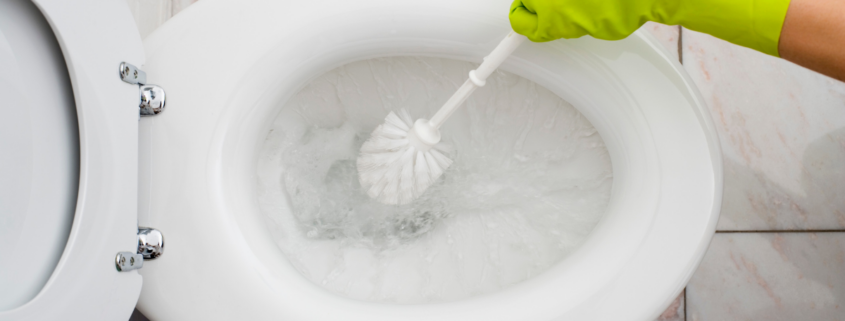



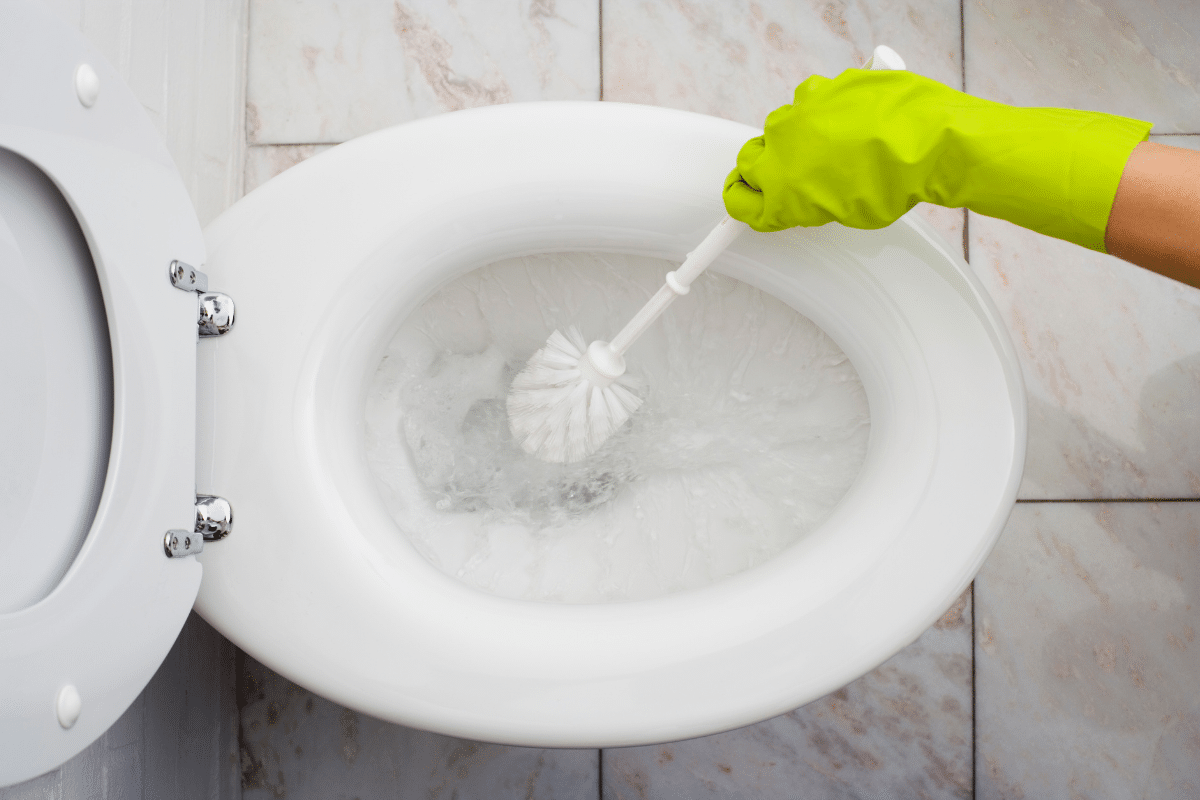

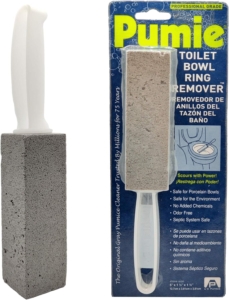





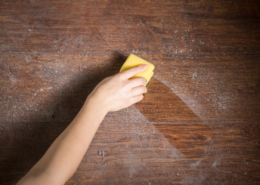



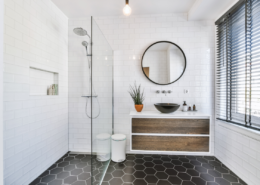



I live in California where most counties are experiencing severe drought and wildfires. There are even areas here where homes don’t even have water enough to drink or bathe, let alone flush! Flushing the toilet is one of the biggest users of water in the home, especially if your toilet/s are not low flow.
While I agree with most of the responses for products for cleaning, I completely disagree with your suggestion to flush after each use. Remember the saying, “if it’s yellow let it mellow, if it’s brown flush it down?” So what if your toilet bowl gets a bit icky. Get over it! With the IPCC’s paper just issued yesterday, saying the planet and humanity are in a “code red” state of emergency I say everything is connected, even our toilets and water use. It’s high time we start to think differently about how we live and the resources we use.
I use Clorox Toilet Bowl Cleaner. I squirt it under the lip of the toilet when the whole bowl needs to be cleaned or on a spot if there is only a small stain. I rarely have to use the brush. The cleaner takes care of everything.
I poured some Blue Dawn liquid into my toilet bowl when I was going to be gone all day and it did a fantastic job of getting the bowl clean. First time I’d tried it but it worked. Ran the toilet brush around the inside and was pleased with the result….
Hi Mary, I am seeking information/recommendations for a personal alarm; these can usually be put on a key ring; there are quite a few available, but many are useless. I hope this e-mail reaches you. Terri Printz
a related question- how do I clean the toilet brush and container? I used to use disposable scrubber pads and am trying to reduce plastic usage, so I bought a brush but not sure how, or how often to clean it. thanks for all you do!
I keep my toilet brush in a gallon mason jar half full of water with a table spoon of polmolive dish soap. My brush stays clean. I use the soapy water to clean the bowl on the toilet every day and change the soapy water in the mason jar out every two weeks. I never have toilet rings or dirty brush. Dawn would work too but I’m allergic to it to wash my dishes with. Gives me a rash. Polmolive is what I buy, the clear colored one with no scent.
The maintenance instructions to keep the toilet bowl clean are really funny.
I personally don’t know ANYONE whose toilet doesn’t get flushed several times a night.
I know people with only one bathroom and small children. Guess what the odds are that would ever work…..but I do appreciate the good laugh I had when I read it.
A small amount of Lime-away spray works for me. Brush and flush, rinse brush. (we have very hard water)
Are all these cleaners safe for all septic systems?
Thanks in advance!
Nothing but water should go down the drain when you have a septic system -BUT, in small amounts vinegar, baking soda and/or Dr Bronner’s soaps are safe.The goal with septic systems should be to have them work so efficiently that they NEVER need to be pumped!
Kind of on a similar note. even with a soft water system, I see the rust trying to creep in. I use Bar keeper’s Friend every couple of weeks (and clean with comet cleanser afterward) and it works very well. So grateful to know these other great tips too. Thanks, Mary.
I discovered a wonderful product for this problem. It’s called Iron Out. It is available in a spray gel or granular format. I use the concentrated powder. Just pour (or spray) into the bowl and let it sit for 10-20 minutes or so and then use a toilet bowl brush to clean the whole bowl.
BE CAREFUL though it is really strong. I wear gloves and a mask (we all have plenty of those now) and I open a window when I apply it, then close the door and leave to let it work its magic. It works fast and you will be amazed at the result.
Hi Michelle … Your comment proves the purpose of this post, that you can do the same job for a lot less $ and no chemicals or toxic fumes 🙂